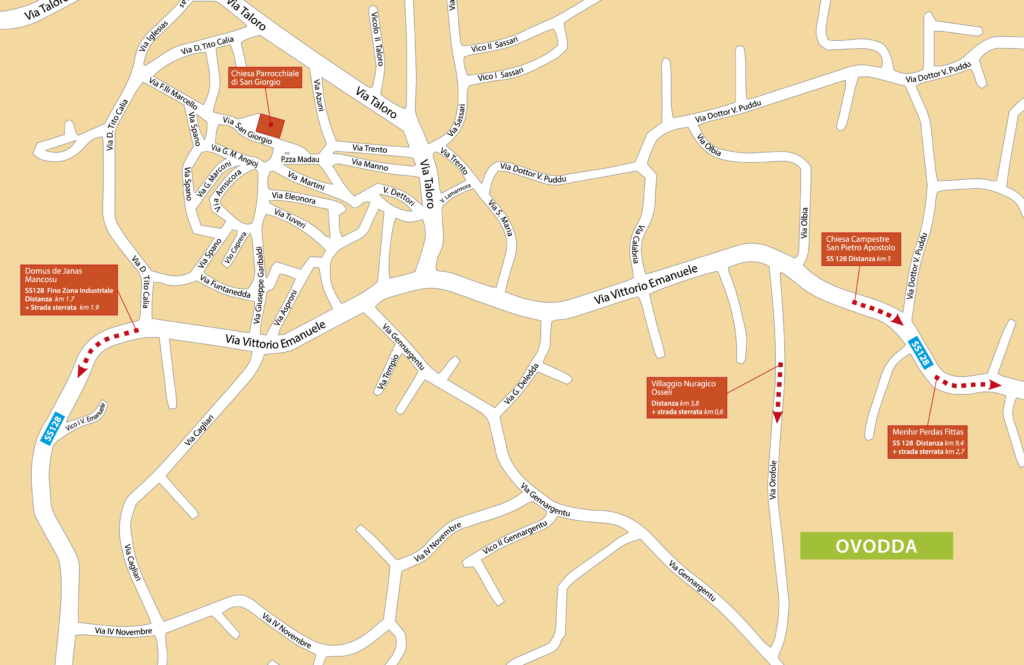Menhir Predas Fittas
The area long known in archaeological literature as the locality Predas Fittas is notable for the presence of several menhirs. The monuments are mentioned for the first time in a document dated 1473, relating to the partition between the municipalities of Ovodda and Gavoi of the territories then belonging to the settlement of Oleri, which has now disappeared and of which the country church of San Pietro remains as evidence.
Subsequently, the menhirs are mentioned by Vittorio Angius, by Alberto della Marmora in his Viaggio in Sardegna (‘Travels in Sardinia’), and by Antonio Taramelli.
Giovanni Lilliu provides an exhaustive description of the area, identifying eight menhirs, some of which were standing, some broken and lying on the ground, while others were reused in a nearby settlement that can be dated back to Roman times. Only two menhirs are currently standing.
In the wider area, there is evidence of human habitation dating back to the Recent-Final Neolithic (Ozieri Culture, late 5th – 4th mill. B.C.), the Recent Bronze Age and the Roman period. The intense occupation of the area, in correspondence with the valley of the Aratu river, is attributable to the proximity of the watercourse and the consequent availability of land favourable to human settlement.
Lilliu, in his work La civiltà dei Sardi (‘The Civilisation of the Sardinians’), emphasises how menhirs or predas fittas were often erected along the route of old roads, some travelled during cattle drives, or at the confluence of several roads.
“It is plausible that the menhirs were conceived and constructed not only in the local function of cult simulacra… but also as landmarks, signs or resting places for travellers…”
Text by Laura Melis with the contribution of Elisa Soru

 BIM TALORO
BIM TALORO